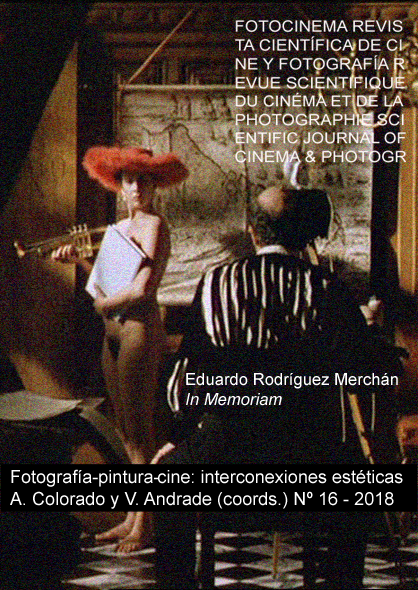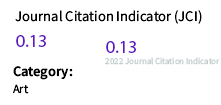Julia Roberts and Charlize Theron in Mirror, mirror and Snow white and the huntsman: Two competing wicked queens, under the influence of Walt Disney’s heroine
DOI:
https://doi.org/10.24310/Fotocinema.2018.v0i16.4088Keywords:
Live Action, Animated Films, Adaptation, Star Studies, J. Roberts, C. TheronAbstract
In 2012, two new versions of Snow White came out of Hollywood – Tarsem Singh’s Mirror, Mirror and Rupert Sanders’s Snow White and the Huntsman. Although many adaptations of this tale have been released, Disney’s animated version (1937) remains the reference. Due the obligations of competition, Singh and Sanders needed to ensure that each of their films stood out in relation to the other by dealing with the same difficulty: creating surprise in relation to expectations based on the Disney film. This common element explains why, despite their differences, the two films give their respective stars, Julia Roberts and Charlize Theron, the role of the queen. The link between the film which is seen as the benchmark and these new versions is revealed thanks to the character who, in the Disney film, is the least “cartoonish” and reveals the duality which characterises the creation of heroes in animated works, in that the way she is played is determined by Lucille La Verne’s voice work. This duality can be found in the performances of Roberts and Theron who walk the line between cartoons and “realism”. The embodiment of the queen by these two stars shows us how the porous the frontier between animated characters and “real” characters can be.
Downloads
Metrics
Publication Facts
Reviewer profiles N/A
Author statements
Indexed in
-
—
- Academic society
- N/A
- Publisher
- Universidad de Málaga
References
Allan, R & Sibley, B. (1999). Walt Disney and Europe: European Influences on the Animated Feature Films of Walt Disney. London: John Libbey Cinema and Animation.
Bettelheim, B. (1976). Psychanalyse des contes de fées. Paris: Robert Laffont.
Derisson, K. (2014). Blanche Neige et les sept nains, la création du chef-d’œuvre de Walt Disney. Paris: L’Harmattan.
Finch, C. (1999). L'art de Walt Disney, de Mickey à Mulan. Paris: Editions de la Martinière.
Gaudreault, A & Marion, P. (2013). La fin du cinéma ?. Paris: Armand Colin.
Grimm, J & W. (2012). Blanche Neige et autres contes des frères Grimm. Paris: Pocket.
Holliss, R & Sibley, B. (1987). Snow White and the Seven Dwarfs & the making of the Classic Film. New York: Simon &Schuster.
Johnston, O & Thomas, F. (1995). Les méchants chez Walt Disney. Paris: Dreamland.
Kaufman, J-B. (2012). The fairest One of All. San Francisco: The Walt Disney Family Foundation Press.
Massuet, J-B. (2014). L’impact de la Performance Capture sur les théories du cinéma d’animation. Écranosphère, n°1.
Renaut, C. (1997). De Blanche Neige à Hercule, 28 longs métrages d'animation des studios Disney. Paris: Dreamland.
Smoodin, E. (2012). Snow White and the Seven Dwarfs. London: Palgrave macmillan, BFI.
Downloads
Published
How to Cite
Issue
Section
License
All contents published in Fotocinema Revista científica de cine y fotografía are protected under the Creative Commons Attribution-NonCommercial-ShareAlike 4.0 International (CC BY-NC-SA 4.0) license. All about this license is available in the following link: <http://creativecommons.org/licenses/by-nc-sa/4.0>
Users can copy, use, redistribute, share and exhibit publicly as long as:
- The original source and authorship of the material are cited (Journal, Publisher and URL of the work).
- It is not used for comercial purposes.
- The existence of the license and its especifications are mentioned.
There are two sets of authors’ rights: moral and property rights. Moral rights are perpetual prerogatives, unrenounceable, not-transferable, unalienable, imprescriptible and inembargable. According to authors’ rights legislation, Fotocinema. Revista científica de cine y fotografía recognizes and respects authors moral rights, as well as the ownership of property rights, which will be transferred to University of Malaga in open access. The property rights are referred to the benefits that are gained by the use or the dissemination of works. Fotocinema. Revista científica de cine y fotografía is published in an open access form and it is exclusively licenced by any means for doing or authorising distribution, dissemination, reproduction, , adaptation, translation or arrangement of works.
Authors are responsable for obtaining the necessary permission to use copyrighted images.














13.png)



